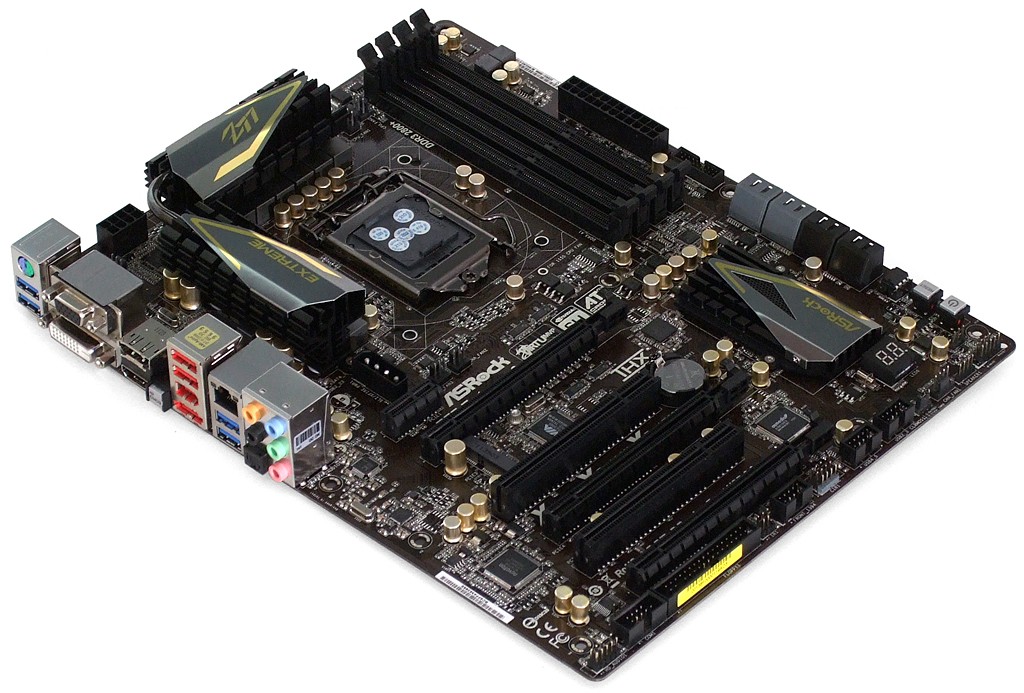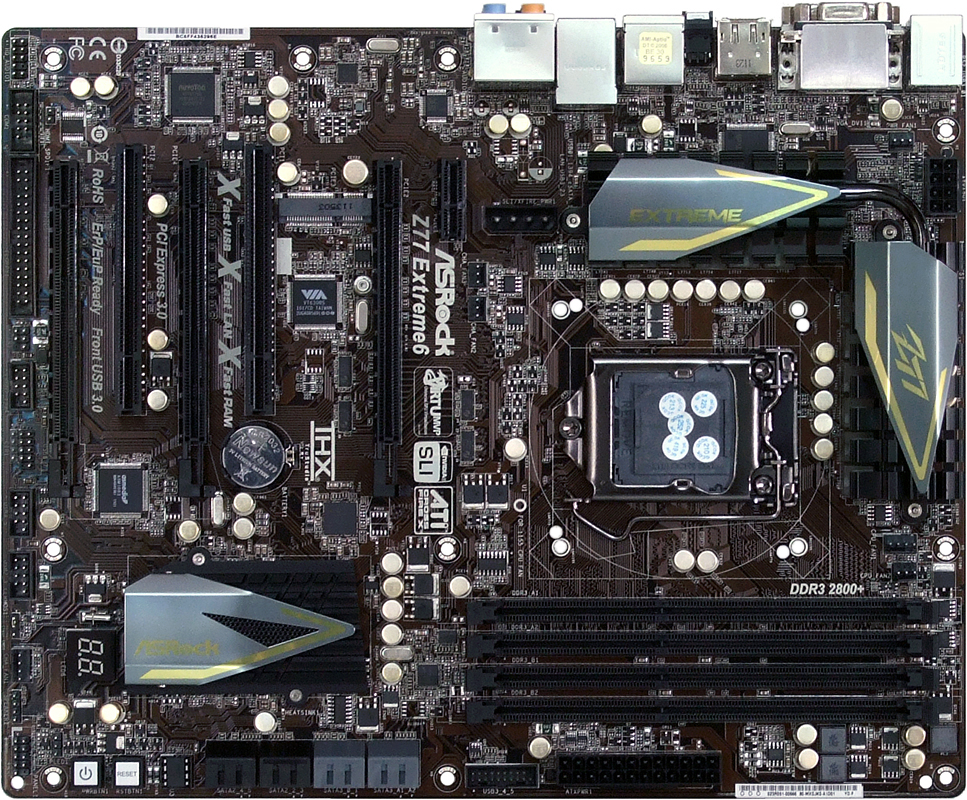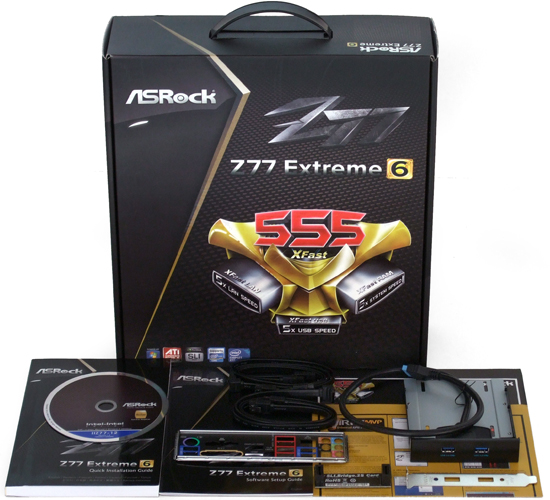Six $160-220 Z77 Motherboards, Benchmarked And Reviewed
Combining the newest features with moderate expandability, Intel’s mainstream platforms provide high value to most gaming and overclocking enthusiasts. We compare six examples with Z77 Express to find the best features, overclocking, and efficiency.
ASRock Z77 Extreme6
ASRock’s $165 Z77 Extreme6 targets value seekers in the mid-range enthusiast market with three-way graphics capability, an extra USB 3.0 controller, an extra SATA 6Gb/s controller, a two-digit diagnostics display, and an I/O panel CLR_CMOS button to assist in recovery from failed overclock attempts.
Those extra controllers bring the total number of USB 3.0 ports to six, and the total number of SATA 6Gb/s ports to four. One of the added SATA ports is still shared with the eSATA connector, however.
ASRock even adds mini-PCIe beneath the primary x16 slot to enable the addition of notebook-style adapters, such as internal Wi-Fi cards, which lay flat over its PCI-based VIA IEEE-1394 controller.
There’s no good way to host a third PCIe 3.0 graphics card on an LGA 1155 platforms, since only sixteen of these lanes are native to Ivy Bridge CPUs. The Z77 Extreme6 divides those lanes into x8/x8 mode whenever a card is detected in the second slot, relying on the Z77 PCH's slower PCIe 2.0 controller to drive the third slot at x4. That makes this primarily a two-way graphics design, so ASRock triple-spaces the two high-bandwidth slots to support extra airflow and/or extra-thick cards.
Complaining about a layout this clean could be difficult, with its well-placed USB 3.0 front-panel header, replaceable firmware ROM, forward-facing SATA ports and a downward-facing latch on its eight-pin CPU power connector. Yet, further inspection reveals small nags like a front-panel audio header located in the extreme lower-rear corner and the fact that this is a single-ROM motherboard in a primarily dual-ROM market. Amusing asides include floppy and serial port headers next to that audio connection.
The Z77 Extreme6 installation kit includes four SATA cables, a two-way SLI bridge, and ASRock’s USB 3.0-to-3.5” bay adapter with integrated 2.5” drive tray. The ports can be moved to the back of a case by instead attaching them to an included slot plate.
Get Tom's Hardware's best news and in-depth reviews, straight to your inbox.
Current page: ASRock Z77 Extreme6
Prev Page Z77 Express: The Perfect Replacement For Older Machines Next Page Z77 Extreme6 Firmware-
yougotjaked There's a typo on the last page. It says X77H2-A2X instead of Z77H2-A2X :P It's on the second to last paragraph...Reply -
HMSvictory I am surprised that you guys did not include the Asus z77-VReply
http://www.newegg.com/Product/Product.aspx?Item=N82E16813131820 -
confish21 One thing i was looking for was the part about asrock not having true "digital" PWM and going with an analog PWM. Does this really matter?Reply -
Crashman TekN9NeGreat review! At the end of day, it comes down to brand loyalty.I don't think the article stated anything like that. It comes down to the features you want and the cards you plan to use. In the MSI vs ASRock debate, it's x8-x4-x4 with all three slots in PCIe 3.0 mode, or x8-x8-x4 with x4 in PCIe 2.0 mode, and you're definitely wiser to pick between them based on WHAT you plan to use in the third slot.simone saysdo you mean nvidia and intel gets news during weekends not only news but featured articles?It's Monday here, and editorial has very little contact with news.HMSvictoryI am surprised that you guys did not include the Asus z77-Vhttp://www.newegg.com/Product/Prod 6813131820Tom's Hardware didn't "include" anything in the review. A couple boards were excluded based on price, and everything else was let in. The P8Z77-V Pro was the cheapest board Asus sent.rickrentswhy not with Pci-e 3.0?Editor had no PCIe 3.0 cards. And the reason he didn't get one yet is because it didn't matter. The only thing that really mattered in a single-GPU MOTHERBOARD comparison was to use the same card on all platforms.confish21One thing i was looking for was the part about asrock not having true "digital" PWM and going with an analog PWM. Does this really matter?Some digital voltage regulators have been garbage, take a look at a few of the older reviews to see this. Very few have been very good. And many more analog voltage regulators have been garbage, while many more analog voltage regulators have been very good. Quality of execution is more important than the underlying technology.Reply



